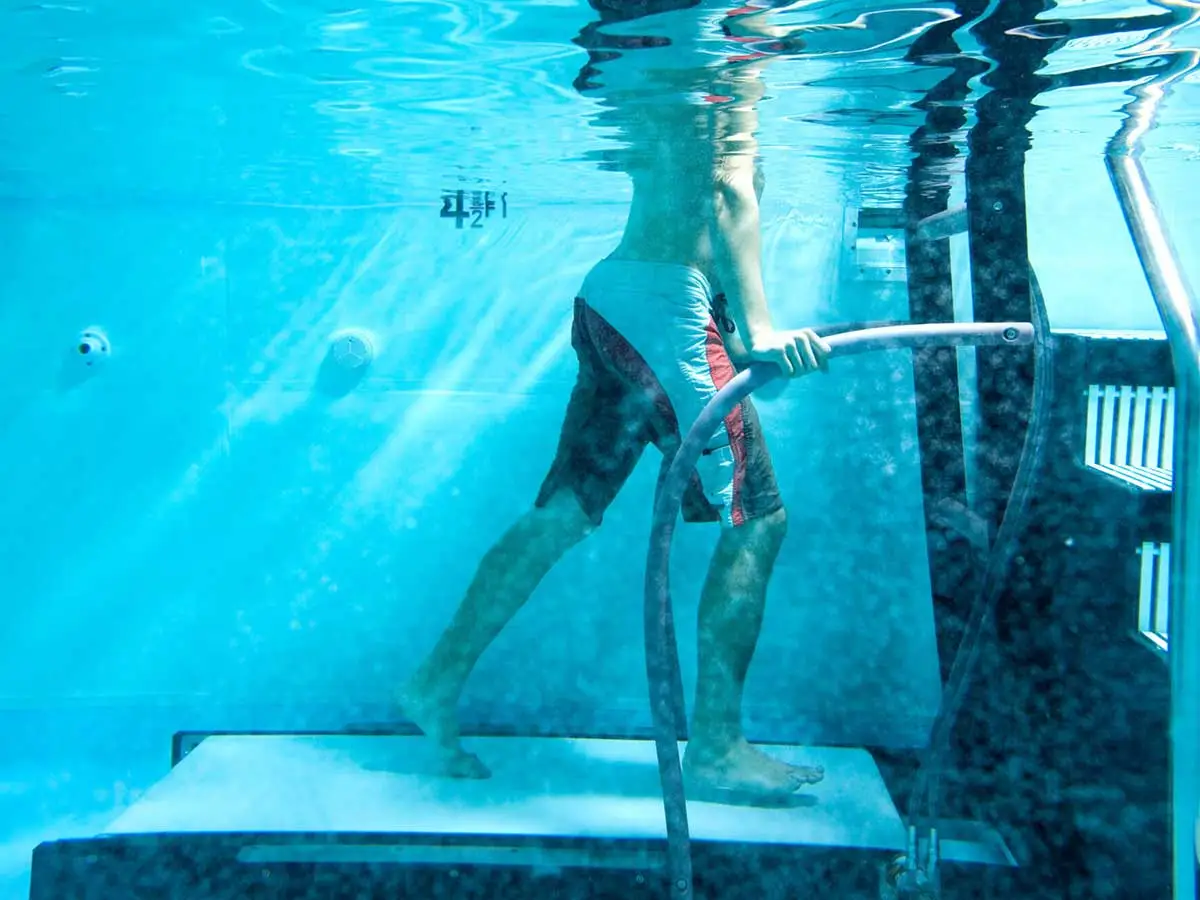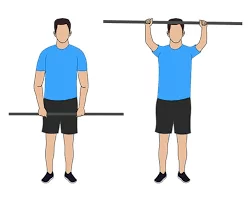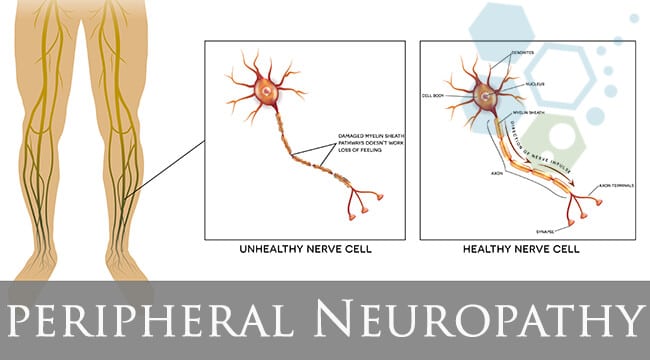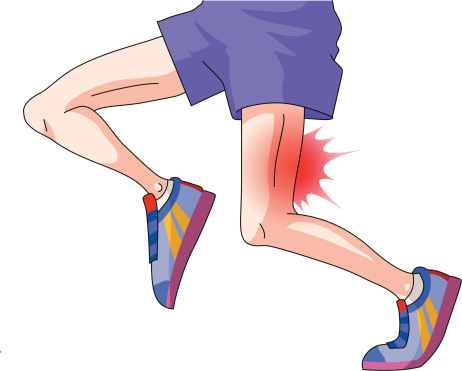Hydrotherapy
Table of Contents
Introduction
Hydrotherapy, also known as aquatic therapy or water therapy, is a therapeutic method that utilizes water’s physical properties for health and healing purposes.
This type of therapy has been used for numerous generations and is said to have evolved from ancient Greek and Roman cultures.
Hydrotherapy is an alternative to naturopathic or nonpharmaceutical therapy. If a person likes to use hydrotherapy, make sure they get it from a reputable hospital and doctor. Water is used for health purposes, often known as “water therapy.” The treatments might be referred to as hydropathy, water therapy, or aquatic therapy, depending on their purpose and use.
Before using hydrotherapy as a treatment, patients should always check with a doctor or physiotherapist.
What is Hydrotherapy?
Hydrotherapy is a method that uses water to relieve a variety of symptoms throughout the body. It is sometimes called water therapy, aquatic treatment, pool therapy, or balneotherapy.
Hydrotherapy directs operating water as a remedy in any state. For example, it might be used to treat long-term health conditions such as arthritis and fibromyalgia, as well as short-term skin concerns like burns and septic ulcers.
The water used in water therapy treatments can be hot or cold, with varying water pressures and speeds. It depends on the patient’s needs.
Aquatic treatment, commonly known as hydrotherapy, refers to specific activities performed in a hot water pool. The water is frequently hotter than in a conventional swimming pool; the temperature should be between 33 and 36 degrees Celsius.
In contrast to aqua-aerobics, which can be relatively tough, aquatic therapy often emphasizes gentle, guided movement and relaxation.
Doctors have used water to treat injuries and diseases since the beginning of recorded history. Medical professionals have begun to feel hydrotherapy is a good solution for occasional ailments and symptoms. Research has shown that hydrotherapy can be an effective way to alleviate muscular pain and joint stiffness.
Some hydrotherapy techniques are as simple as sitting in a hot bath, which people may practice at home. Other ways involve the use of technological spaces/instruments, such as a cold sauna.
Hydrotherapy tools may include,
- physical therapy tanks.
- Swimming Pools
- Whirlpool Spas
- Hot tubs
- Saunas
- showers and baths
Depending on the goal of therapy and the practitioner, there will be extraordinarily different methods of application.
Aquatic therapy can be useful regardless of the number of joints affected. It is occasionally used if the person has undergone joint replacement surgery and suffers from pain in the back, psoriatic arthritis, ankylosing spondylitis, or osteoarthritis.
Hydrotherapy refers to the use of water to relieve pain and treat certain conditions. Hydrotherapy instruments include pools, spas, whirlpools, hot tubs, and physiotherapy tanks. Posing in hot water can help people with ailments including burns, amputations, septic ulcers, arthritis, and lesions. Hydrotherapy requires the use of pure, safe water, which must be conserved for the health and safety of the people.
Many of these people’s immune systems have been depleted as a result of ongoing illnesses, rendering them especially vulnerable to developing new infections from contaminated hydrotherapy pools.
Incidental ingestion of dirty water, inhaling water-borne sprays and aerosols, and allowing open wounds to come into contact with the water are all potential sources of sickness.
Hydrotherapy tanks, pools, and birthing tanks provide unique challenges for disease management since the water is usually degraded by naturally occurring bacteria, some of which may not be dangerous to healthy people.
How does hydrotherapy work?
Hydrotherapy works on a number of different levels:
- Water temperature: Hot water is beneficial for joints and muscles to relax. Relaxation allows one to force it more easily and makes exercising simpler.
- Buoyancy: Because an individual naturally moves in water, the water allows the body to aid itself. This helps to relieve stress on the muscles and joints.
- Resistance: Water has higher resistance than air, making it more difficult to reposition. This helps to develop muscle power.
Types of Hydrotherapy:
A doctor, physical therapist, or alternative health professional might prescribe the best hydrotherapy for a patient based on their specific health goals.
Aquatic activity
Aquatic exercise is a low-impact exercise that is often performed in a pool using specialized equipment. It allows people to boost their heart rates and muscular activity without causing unnecessary pressure on their joints.
These exercises are ideal for the elderly, who are more likely to fall or want to exercise in a low-impact setting, and those suffering from arthritis or fibromyalgia.
Warm water baths
Hydrotherapy consists of taking a warm bath and resting. Salts, minerals, essential oils, and other substances can be added to the bath to improve its quality.
Sitz bath
Sitz baths, which are shallow, may be filled with either warm or cold water. Professionals may prescribe sitz baths to relieve cramps or hemorrhoids.
Wraps, compressions, and fomentation.
Wraps and compresses made of hot, warm, or cold water are also part of hydrotherapy. These may give targeted relief from mild symptoms and assist in the course of treatment.
Saunas
Saunas can be wet or dry heat, cold or chilled, depending on the definition. These include sitting in a place that has been heated or dried to a certain temperature.
Water circuit treatment
Water circuit treatment, also known as contrast hydrotherapy, is sequentially using a range of hydrotherapy procedures, usually rotating between warm and cold water, to enhance circulation and ease symptoms.
Depending on the practitioner and the patient, the circuit may alter greatly, although it may contain a range of techniques, including:
- Warm baths
- Wet or dry saunas
- Cold plunges
- Cool baths
Immersion treatments
Immersion treatments include the patient immersing oneself in water to receive relief. They include:
- Baths can be warm or cool
- Cold plunges
- Sitz Baths
- Hot tubs featuring jet massages
- Whirlpool baths
Why is Hydrotherapy used?
Hydrotherapy is usually used to treat symptoms such as pain and stiffness. Your clinician may recommend hydrotherapy as part of your overall treatment or symptom management strategy. Hydrotherapy can help persons with the following conditions feel better:
- Pain
- Stiffness
- Bruising
- Swelling
- Muscle ache
- Menstrual pain
What does hydrotherapy treat?
Using water in various conditions and temperatures can help people suffering from a variety of ailments feel more comfortable. Hydrotherapy can give symptomatic relief to persons with underlying diseases:
- Osteoarthritis
- Fibromyalgia
- Parkinson’s disease
- Neuropathy
- Ankylosing Spondylitis (AS)
- Multiple Sclerosis
- Cerebral palsy
It is critical to understand that hydrotherapy does not treat any of these ailments. It should not be used instead of any therapy prescribed by your doctor. Hydrotherapy often improves health by reducing pain, immobility, and edema
Finding a safe way to experience enough is never a bad thing, but hydrotherapy will not be able to treat many ailments, particularly more severe chronic conditions.
Hydrotherapy for Burns
Hydrotherapy can help those who have suffered burns. A jet spray of water is a safe and effective way to clean open wounds and damaged skin. Applying pressurized water to burns can also help alleviate:
Symptoms include pain, redness, scarring, and Permanent discoloration.
Use hydrotherapy in physiotherapy
Hydrotherapy, in addition to physiotherapy, can help people recover from surgery or injury. Rolling in the water is a low-resistance approach to working safely. People have heard about swimming/water aerobics as wonderful possibilities for individuals who have pain from other forms of exercise.
Always consult with a medical expert before resuming any physical activity following surgery. Hydrotherapy tanks, pools, or tubs may increase the risk of disease. An individual must wait a certain length of time following the surgery procedure before getting the incision region moist.
Use of hydrotherapy during pregnancy
Some ladies have found hydrotherapy beneficial throughout their pregnancy. An investigation found that pregnant women with high blood pressure may be able to minimize their risk of complications such as pre-eclampsia with standard hydrotherapy intervention.
Some pregnant women prefer to labor in hot water, which can improve their comfort and alleviate pains and anxieties.
Consult with a doctor about what a person wishes to include in the pregnancy and labor process.
The use of hydrotherapy for weight reduction
Hydrotherapy alone does not cause, promote, or improve weight reduction. However, training programs that involve water workouts can help people lose weight and improve their overall fitness.
Application of Hydrotherapy for Children
Children with neurological and orthopedic conditions are frequently treated with hydrotherapy, which also helps them function better and live better after surgery. Hydrotherapy may be beneficial for some pediatric diseases.
Hydrotherapy can be beneficial in a variety of pediatric disorders, including:
- Cerebral palsy,
- Spina bifida,
- other conditions are muscular dystrophy, autism, and Down syndrome.
Goals of Hydrotherapy for Children:
Hydrotherapy for children seeks to achieve goals comparable to those of a land-based agenda. It will be utilized in conjunction with a land-based program to ensure the transfer of useful skills. The specific aims of a pediatric hydrotherapy regimen include:
- Upgrade of standard development
- Working for physical milestones.
- Decrease pain.
- Normalise tone and increase strength.
- Increase function.
- Encourage relaxation and mobility in tight joints.
- Improve the capacity to bear weight.
Application of Hydrotherapy in Cardiovascular and Pulmonary Conditions
Individuals with a history of chronic cardiovascular or pulmonary disorders might benefit from hydrotherapy by increasing muscle and cardiopulmonary stability.
Any person assessed with a chronic cardiovascular/pulmonary condition would benefit from including hydrotherapy in their rehabilitation plan. Hydrotherapy assistance for cardiovascular and pulmonary disorders includes the following:
- COPD (Chronic Obstructive Pulmonary Disease)
- heart failure.
- Angina
- Underlying myocardial infarction (heart attack).
- Underlying cardiac or lung surgery
- Hydrotherapy and comparative treatment from a physiotherapist
Hydrotherapy is especially beneficial for persons who find ground exercise difficult due to pain and restrictions. This group of people may contribute to a cardiovascular/pulmonary ailment caused by a musculoskeletal problem, such as:
- Osteoarthritis
- Rheumatoid arthritis.
- Underlying current surgery
- Low backache
- Current ankle sprain or any other painful lower limb injuries.
Uses of Hydrotherapy in Cardiovascular and Pulmonary Conditions
Hydrotherapy may be used as part of a pulmonary/cardiac rehabilitation regimen. Patients with various medical conditions can exercise more comfortably because of the unique environmental environment of hydrotherapy. The goals of rehabilitation are:
- Increase exercise tolerance.
- reducing the incidence of shortness of breath.
- The improvement of well-being and quality of life (QOL).
- Strengthen your muscles.
- Increase persons’ knowledge and awareness so that they are appropriately prepared to cope with their condition on a regular basis.
- Reduce discomfort and improve functional abilities.
Application of Hydrotherapy in Neurological Conditions
Hydrotherapy is used in conjunction with other rehabilitation methods to treat people suffering from a range of neurological disorders. Patients with neurological problems may repeatedly do an activity in the water that they are unable to do on the ground/floor.
Hydrotherapy may be beneficial for the following neurological illnesses:
- Multiple Sclerosis (MS).
- Cerebro-Vascular Accident
- Muscular Dystrophy
- Parkinson’s disease.
- Traumatic Brain Injury
- Guillain–Barré syndrome (GBS)
Hydrotherapy is used to treat neurological problems.
The aims of hydrotherapy are similar to those of an on-floor schedule; however, they can be achieved more successfully because of the physical effects of warm/hot water.
- Avoid stiff joints and bodily tissue injuries.
- Use buoyancy impact to improve muscular mobility.
- Expand motor control by using functional destinations.
- Improve muscular power and perseverance.
- Encourage function and increase independence in ADLs.
- Improve the quality of life (QOL).
What are the benefits of Hydrotherapy?
Using hydrotherapy as a domain of physiotherapy can lead to several advantages, for example:
Reduced pain: Warm/hot water had a significant pain-relieving effect in those with common musculoskeletal and connective tissue disorders. The region may have less pain due to the warm/hot water’s ability to relax pain signals, relax muscles, and improve blood circulation.
Enhancing cognitive health: According to the Centers for Disease Control and Prevention (CDC), water-based exercises may benefit certain people’s cognitive health. For example, persons suffering from fibromyalgia may discover that water training relieves their anxiety and depression. Swimming also improves mood and helps you relieve stress via exercise.
- Quicker recovery following surgery
- Re-education and promotion of normal mobility.
Arthritis symptoms: Hydrotherapy may help with some arthritis issues. For example, one study discovered that 8 weeks of aquatic exercise, particularly knee movement, improved pain characteristics in people with osteoarthritis. Another study revealed that those with rheumatoid arthritis (RA) who exercised modestly in the water while taking their medication saw improvement in their symptoms, including lower levels of oxidative stress. Because of the water’s buoyancy, those who are unable to hold their own weight can stand up.
- Enhanced Walking Method
- Improved aerobic fitness levels
- Improved balance and coordination
- Increased strength of weak muscles
- Increased joint range of motion
- Enhanced independence in ADL function.
- Improved circulation in the body
- Mobilizing and stretching the muscles
- Increase self-confidence.
- Reduce fear of falling.
A peaceful and tranquil experience: Many hydrotherapy techniques promote cognitive and physical relaxation. Warm/hot water may help to reduce muscular stress and promote a relaxed state of mind.
Recovering from workouts: Athletes can recover after exercises using a variety of hydrotherapy procedures that alternate between warm and cold water. Many people believe that this type of contrast hydrotherapy aids in their recovery from strenuous activity and helps them prevent slowed initial muscular pain.
To maximize these advantages, physical therapists will tailor the hydrotherapy to the patient’s needs. Physical therapists will ensure that you feel relieved in the water and will be able to adjust the timetable if the patient becomes uncomfortable. For example, perform functional exercises while using the sidebar as support.
Contraindications of Hydrotherapy:
The following are major and definite contraindications for prescription hydrotherapy:
Serious contraindications:
- Cardiovascular illness.
- Cardiovascular disease
- Diabetic balance disorder.
- History of CVA and epilepsy
- Incontinence
- Possible medical conditions include labyrinthitis, cold, and influenza.
- Fever and skin disorders
- Chemical Allergies (Chlorine)
Absolute Contraindications:
- Contagious illnesses
- Hepatitis
- Tracheotomy
- Urinary tract infection.
- Severe epilepsy
- Urinary incontinence
- Open wounds.
- Recent Surgery
- Hydrophoby
What are the hazards associated with Hydrotherapy?
Hydrotherapy is typically safe. However, there are various concerns and reasons to avoid it completely, such as:
Overheating: it is the most prevalent adverse effect of hydrotherapy. Keep track of the time you spend in warm water. If you feel disoriented, hot, or like you’re about to pass out, stop your hydrotherapy session and immediately for help.
Increased blood pressure: Heat can occasionally raise your blood pressure. If you have high blood pressure or another cardiac issue, see your doctor about whether hydrotherapy is safe for you.
Infections: Make sure that the water is clean and safe. The CDC offers detailed rules for keeping pools and tanks clean. Even if a hospital fulfills these standards, infection remains a danger. Avoid entering the water with exposed wounds.
Seizures: People with a history of epilepsy or seizures should avoid hydrotherapy. For individuals, it may be at risk of seizures. Seizures are especially deadly when they occur in water.
As a general guideline, see your doctor if you have a condition that raises your risk of infection, breathing issues, or heart problems. Diabetes, heart failure, immunocompromised skin, and wound healing are all examples of these disorders. Hydrotherapy may still be an effective treatment choice for you, but you should double-check.
Can you have too much Hydrotherapy?
There is no firm guideline (or study) for determining how much hydrotherapy is excessive. The appropriate frequency and duration of hydrotherapy sessions vary on the individual, their condition, and the kind of hydrotherapy.
Some studies on hydrotherapy treatments reveal advantages after just ten minutes. Others considered lengthier sessions, up to an hour. Most hydrotherapy studies include two or three sessions per week.
While there are no clear criteria, the following recommendations may be useful:
Listen to your body. Because several forms of hydrotherapy can help with pain and injury, don’t push yourself beyond your comfort level.
Start off slowly. Water may reduce pain and weariness during exercise, so it’s tempting to overdo it at first. Get advice regarding your specific situation from a provider or rehabilitation specialist if you are utilizing hydrotherapy to treat pain or injury.
Allow yourself time to heal. Give yourself at least one to two days between sessions, especially if you are just getting started. In this manner, you may have a better understanding of how the treatment is impacting you while also allowing your body to recuperate.
Limit your time in heated water. Most individuals are recommended to limit their time in saunas or warm-water baths to 20 or 30 minutes. If you begin to feel hot, it is preferable to stop the session.
Hydrotherapy at home:
There are several methods to get some of the benefits of hydrotherapy at home. This includes:
- Simply taking time to take a nice bath.
- Taking a contrast shower (alternating between cold and hot water for multiple cycles)
- In a jacuzzi, you’re sitting against the water jets.
- Soak your feet in a bathtub of warm water.
- If you’re treating a specific ailment or believe you’ll require special hydrotherapy equipment, consult with a doctor first.
Conclusion:
Hydrotherapy may offer distinct benefits as a complementary remedy to traditional treatments. Relaxing hydrotherapy techniques, such as foot baths and saunas, may help people relax and reduce anxiety and unwanted symptoms. Every patient requires collaboration with a therapist to select the most suited ways for the individual.
FAQs
Hydrotherapy is the use of water to relieve minor ailments and treat particular medical conditions. Hydrotherapy equipment includes hot tubs, whirlpools, whirlpool spas, pools, and physiotherapy tanks.
The soreness has decreased.
Surgery results in faster recuperation.
Re-education and drive for routine activities.
Allows standing in people who are unable to bear weight out of the water due to the buoyancy influence of water.
Improved walking procedure.
Increased aerobic healthiness levels.
Improved balance and coordination.
Set your shower to warm/hot for 2-3 minutes. Adjust your water temperature to be as cold as you can stand. We recommend starting with 30 seconds and constructing for up to 1 minute. Repeat 2–3 times. Finish with a cold shower for a longer-lasting power boost.
Both hot and cold water are used continuously, and persons are given contiguous baths, one with cold water and one with warm water. Baleno therapy: This helps people recover from ailments like arthritis, skin allergies, and fibromyalgia.
The distinction between hydrotherapy and water therapy is that water therapy uses water as the primary treatment method, whereas hydrotherapy can also include additional modalities such as heat packs, cold packs, electrical stimulation, ultrasonic waves, and massage.
Chlorine compounds now utilized in hydrotherapy pools include sodium hypochlorite solution, calcium hypochlorite granules/tablets, sodium dichloroisocyanurate granules, and other chemicals.
Monitor the cleaning schedule with the Domestic Supervisors. Before entering the pool, ensure that all personnel and patients have had a shower. Encourage workers and patients to use the restroom before entering the pool. Inspect patients’ feet and provide protective footwear.
References
- Sankhla, D. (2023, April 30). Hydrotherapy – Type, Benefits, Indication, Contraindication. Samarpan Physiotherapy Clinic. https://samarpanphysioclinic.com/hydrotherapy/#Benefits_of_hydrotherapy
- Vaghela, D. (2023a, December 13). Hydrotherapy – Type, Benefits, Uses – Mobile Physio. Mobile Physiotherapy Clinic. https://mobilephysiotherapyclinic.in/hydrotherapy/#What_does_Hydrotherapy_treat
- Professional, C. C. M. (n.d.-c). Hydrotherapy. Cleveland Clinic. https://my.clevelandclinic.org/health/treatments/23137-hydrotherapy
- Johnson, J. (2020, September 30). Hydrotherapy: Types of treatments. https://www.medicalnewstoday.com/articles/hydrotherapy#benefits








One Comment